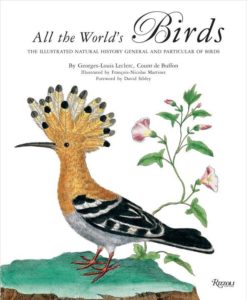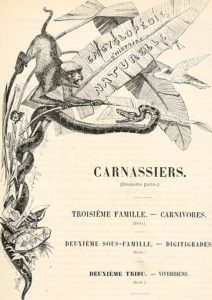Wildfires to the north of us here in Berkeley, extreme heat just beyond our fog belt, and drought in parts of the globe usually saturated this time of year prompted us to look through our archive for essays that deal in one way or another with views of nature. Among the many relevant pieces, our search revealed a pair of fine-grained essays on the 18th-century naturalist Georges-Louis Leclerc de Buffon:
Noah Heringman’s Deep Time at the Dawn of the Anthropocene argues that the concept of deep time is essential to the intellectual history of the Anthropocene—the name widely (though not yet formally) used for our current geological epoch. Buffon’s Epochs of Nature, one of the earliest secular models of geological time in Enlightenment natural history, uses inscription as a metaphor to mark the advent of biological species, including humans, in the course of earth history. The Anthropocene extends this project of writing ourselves into the rock record. Buffon makes a productive interlocutor for the Anthropocene because he is one of the first to examine climate change and related constraints on human agency in the context of deep time. Heringman examines Buffon’s natural history and associated Enlightenment discourses of primitive art and culture to gain a purchase on the challenges of scale posed by the Anthropocene.
Joanna Stalnaker’s Description and the Nonhuman View of Nature also looks at Buffon, but her focus is in counterpoint to Heringman’s. In her essay, Buffon is discussed in tandem with the poet Jacques Delille, Buffon’s near contemporary, whose innovative practices of description call into question our modern opposition between literature and science, raising the issue of how literature might be transformed through attention to nonhuman views of nature.
Read them together–in the shade if you can find it.

 In what follows, I will look at two writers from the French eighteenth century whose work illustrates the contingency of modern categories and definitions of description. The first is the famous naturalist and renowned stylist Georges-Louis Leclerc de Buffon, whose multivolume Histoire naturelle spurred the vogue for natural history across Europe in the second half of the eighteenth century. The second is the once-celebrated but now obscure poet Jacques Delille, who took the Scottish poet James Thomson as his model and introduced the so-called genre of descriptive poetry in France in the last decades of the Old Regime. Taken together, these two writers exemplify what the great naturalist and zoologist Georges Cuvier called “the age of description.” This age has fallen out of view since Cuvier’s lifetime, lost to the modern fracture between literature and science. Yet I will argue that it holds special relevance for us today, at a time when short-story writers and political theorists alike share an impulse to ascribe agency to nonhuman things and to question the centrality of human perspectives. One of the biggest surprises to emerge from the unfamiliar landscape of the eighteenth-century age of description is its elaboration of a poetics of description grounded in dramatic shifts in scale and nonhuman perspectives on nature.
In what follows, I will look at two writers from the French eighteenth century whose work illustrates the contingency of modern categories and definitions of description. The first is the famous naturalist and renowned stylist Georges-Louis Leclerc de Buffon, whose multivolume Histoire naturelle spurred the vogue for natural history across Europe in the second half of the eighteenth century. The second is the once-celebrated but now obscure poet Jacques Delille, who took the Scottish poet James Thomson as his model and introduced the so-called genre of descriptive poetry in France in the last decades of the Old Regime. Taken together, these two writers exemplify what the great naturalist and zoologist Georges Cuvier called “the age of description.” This age has fallen out of view since Cuvier’s lifetime, lost to the modern fracture between literature and science. Yet I will argue that it holds special relevance for us today, at a time when short-story writers and political theorists alike share an impulse to ascribe agency to nonhuman things and to question the centrality of human perspectives. One of the biggest surprises to emerge from the unfamiliar landscape of the eighteenth-century age of description is its elaboration of a poetics of description grounded in dramatic shifts in scale and nonhuman perspectives on nature.